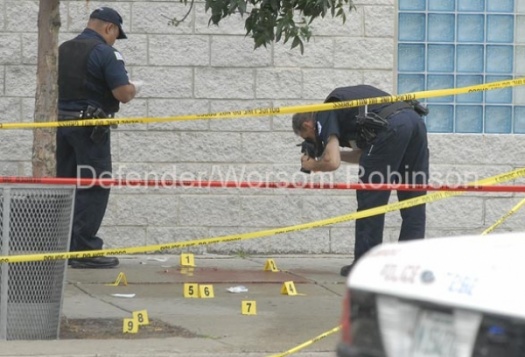
When a shooting incident is reported in the media, “gang-related” is often associated with it. But to say there’s an increased gang problem may not be accurate. Gang numbers haven’t increased, said the Chicago Police Department’s Organiz
When a shooting incident is reported in the media, “gang-related” is often associated with it. But to say there’s an increased gang problem may not be accurate. Gang numbers haven’t increased, said the Chicago Police Department’s Organized Crime Chief, they’re just more visible.
“’Gang-related’ simply means that the offender or victim has gang ties, either self-admitted or distinguishing tattoos. Once the investigation progresses, the incident may not be related to any gang activity. Some can be over domestic disputes, money issues or just interpersonal problems,” Ernest Brown, chief of Organized Crime, told the Defender.
The police’s gang unit falls under Brown’s division.
Gang membership has been steady at 80,000 citywide–self-identified or associated by body art–for years. But the increased reporting by the media of gang-related activity has fueled speculation that gang crime is out of control, he said. From January 1 to August 23, there were 1,296 shootings, or aggravated batteries with handguns, logged by the department. For the same period last year, there were 1,303 shootings, said Chicago Police spokesman Roderick Drew.
“Decades ago the police worked to break up the gang hierarchies. In the late 1980s and early 1990s, we were successful. With no figureheads, a vacuum effect was created. Smaller groups with no real leadership power began trying to assert control over their territories,” Brown said.
Now add in the shifting of neighborhood boundaries and the affordability of vehicles, many gangs became more mobile and covered more of an area within the 279 police beats in the city, the 27-year veteran said.
While Brown said membership numbers haven’t increased because there’s a natural aging-out process, the number remains level, a signal that new strategies must be put in place to deter young children from joining.
“Young people just aren’t scared anymore. Their perception about their own mortality and their anticipation for their future is different than many years ago. These young men are more willing to take life-altering chances. It’s mind boggling,” he said.
Brown said the police department has initiated many programs in the Chicago Alternative Policing Strategies department aimed at keeping the youth off the street and deterring at-risk youth from getting in the system.
“The Gang Resistance Education and Training program is a good example,” he said. “Cops Interacting with Today’s Youth, Peer Jury and Keeping It Real programs are great examples.”
All the programs are implemented in Chicago Public Schools and are not limited to high school students.
He also said with the new school year starting Sept. 8, the police recognize the “era of potential danger and will implement strategies to combat it.”
Brown said the gangs are aware of many of their enforcement strategies that helped significantly put many members behind bars and took drugs off the street. But more will be added to the mix.
______
To read the rest of this article, subscribe to our digital or paper edition. For previous editions, contact us for details.
Copyright 2009 Chicago Defender. All rights reserved. This material may not be published, broadcast, rewritten, or redistributed.